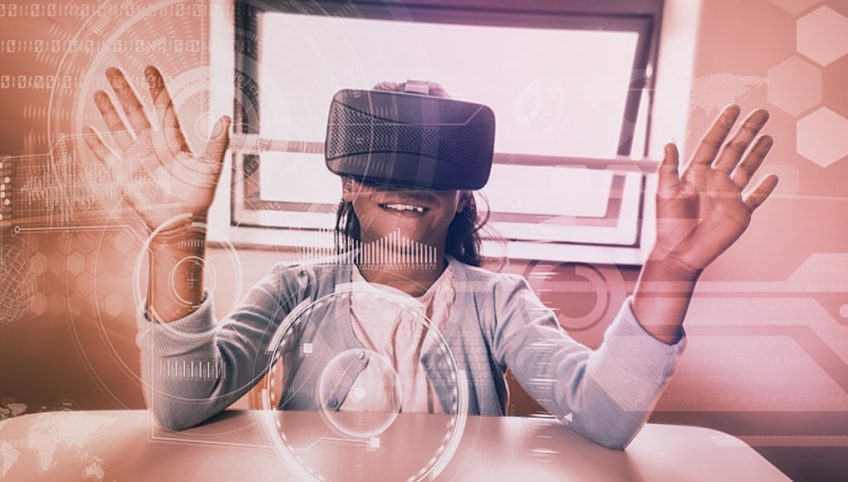As we stride into an age that is increasingly digitized and technologically advanced, new terminologies like Augmented Reality (AR) and Virtual Reality (VR) are becoming ubiquitous. AR is a technology that layers computer-generated enhancements atop an existing reality to make it more meaningful through the ability to interact with it. VR, on the other hand, creates an artificial environment with software, and presents it to the user in such a way that they suspend belief and accept it as a real environment. Simply put, AR enhances the world, while VR provides a completely new one.
AR and VR have made their way into education, as educators recognize their transformative potential. AR and VR technologies foster an immersive learning environment, augmenting traditional teaching methods by offering students interactive, real-life situations. They enable more dynamic, practical learning experiences that accelerate understanding, enhance recall, and foster curiosity and creativity. These tools are gradually being integrated into classrooms, making learning more engaging and productive for future generations.
Table of Contents
STEM Education
STEM education is a multidisciplinary approach that integrates the fields of science, technology, engineering, and mathematics. Unlike the traditional, siloed teaching of these subjects, STEM aims to incorporate real-world relevance and applications, thus instilling in students a deeper understanding and passion for these areas. AR and VR, with their blend of technological sophistication and interactive learning potential, seem ideally suited to enhance and elevate STEM education programs for those who teach in California.
Incorporating VR and AR into STEM Education
Immersive technologies like VR and AR provide a new level of interaction and accessibility in STEM education. They foster a deeper understanding of complex subjects by providing students a virtual, yet tangible, perspective. For instance, students learning about molecular structure or mechanical function can interact with these entities in a 3D space, far beyond the constraints of textbook images or even sophisticated 2D computer simulations. This transfers the emphasis from passive learning to active exploration, making the subjects more engaging and comprehensible.
Currently, educators in globally-recognized tech hubs are embracing AR and VR within their teaching pedagogy. These technologies are being used creatively to supplement traditional teaching methods. For example, students can explore the solar system in a 3-dimensional space using VR headsets, or superimpose AR geological data on physical terrain during a field trip.
Several case studies highlight the effective use of these technologies in STEM education. In a Californian school, VR was used to transport students to civil war battlefields, providing a much deeper understanding of history and warfare tactics than a textbook could provide. In another instance, AR was used to bring engineering blueprints to life, helping students visualize and understand the complex processes involved. These examples demonstrate how AR and VR applications are changing the way we approach STEM education.
The Advantages of Using AR and VR in STEM Education
Enhanced Engagement, Motivation and Improved Understanding
The incorporation of AR and VR technology in STEM classrooms enhances students’ engagement and motivation to learn. With AR and VR, learning becomes an active, rather than a passive process. Students are not simply given information; they actively participate in the learning process, which boosts their interest and willingness to learn. Further, AR and VR notably improve students’ understanding by enabling visualization and interaction with complex concepts. For instance, the workings of a chemical reaction, or the mechanisms of a working car engine can be visualized and explored in a 3D virtual environment.
Fostering Creativity, Innovation, and Collaboration Skills
Along with enhancing student engagement and understanding, AR and VR also foster creativity and innovation. These technologies provide a platform where traditional boundaries of text and static visuals are removed, prompting students to think beyond traditional scenarios, thereby encouraging creativity and out-of-the-box thinking. AR and VR facilitate interactive team projects where students can collaborate and solve problems together in a virtual environment. This not only encourages teamwork but also provides students with the opportunity to improve their collaboration skills, a necessary component for success in the workplaces of the 21st century.
The Future of AR and VR in STEM Education
At present, AR and VR are making significant contributions to STEM education. Modern classrooms are increasingly integrating these technologies, allowing students to explore concepts and subjects with great detail. In the future, it is anticipated that these immersive technologies will see even more advanced utilization. We might see the rise of haptic technology–which simulates touch feedback–and it might become prevalent, providing students the ability not only to see and hear in a virtual environment but also touch. Advancements in artificial intelligence may also converge with AR and VR to offer highly personalized and adaptive learning experiences.
The prospective advancements in AR and VR have the potential to significantly alter the way STEM is taught in schools. Teachers will have to adapt their teaching methodologies to incorporate these technologies more effectively into their lessons and optimize their potential. As schools gradually shift from traditional methodologies to more technology-assisted lesson delivery, there will be a pronounced move towards active, experiential learning. The classrooms of the future might well be dynamic, interactive spaces where learners are active participants rather than mere consumers of information.
The integration of Augmented Reality (AR) and Virtual Reality (VR) in STEM education is a transformative force that is redefining the learning environment. These technologies provide robust platforms for interactive, experiential learning, fostering deeper engagement, understanding, and creativity among students. The future of education will likely involve these rapidly advancing technologies, as they will shape learners into thinking, problem-solving individuals.







